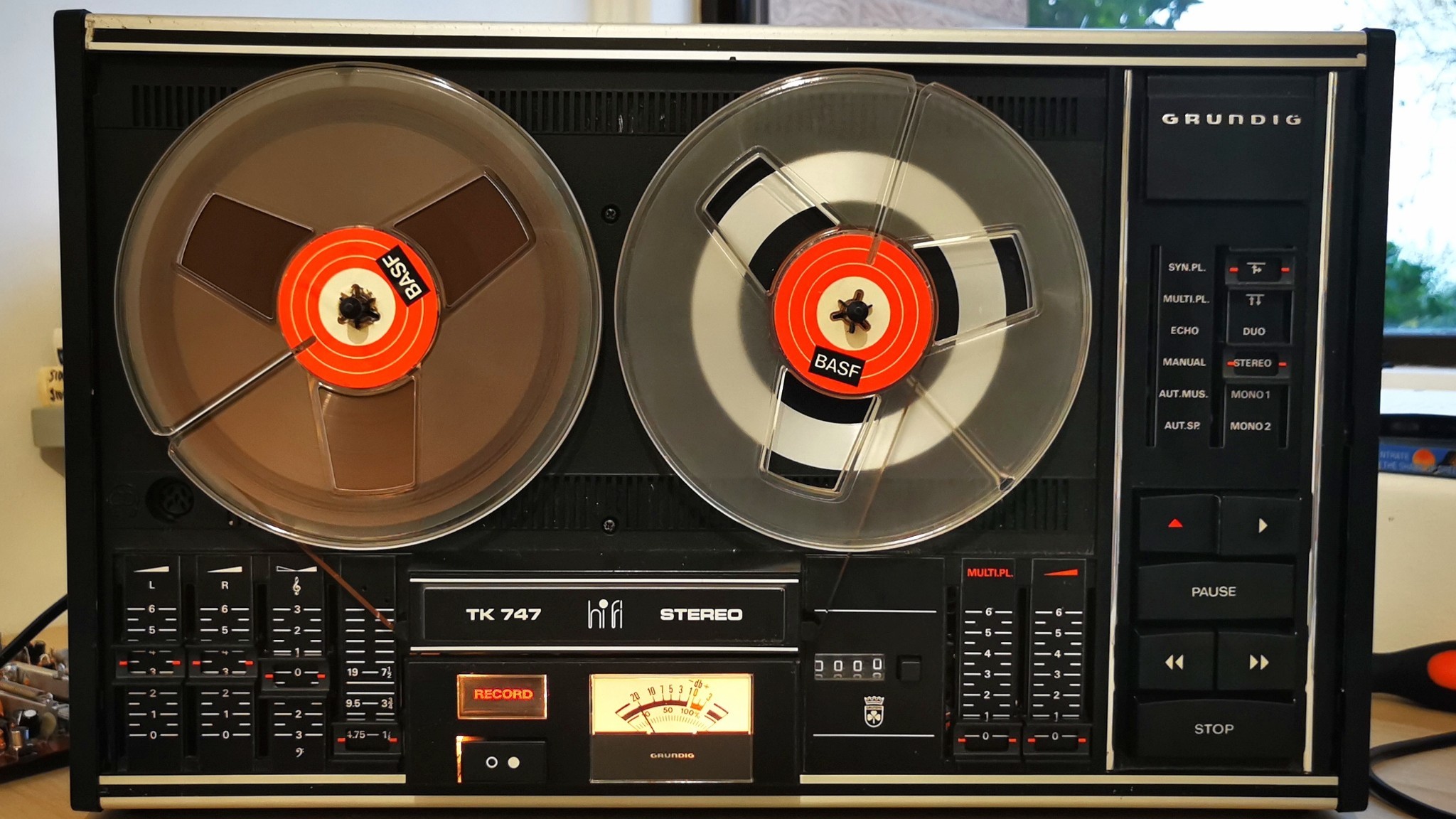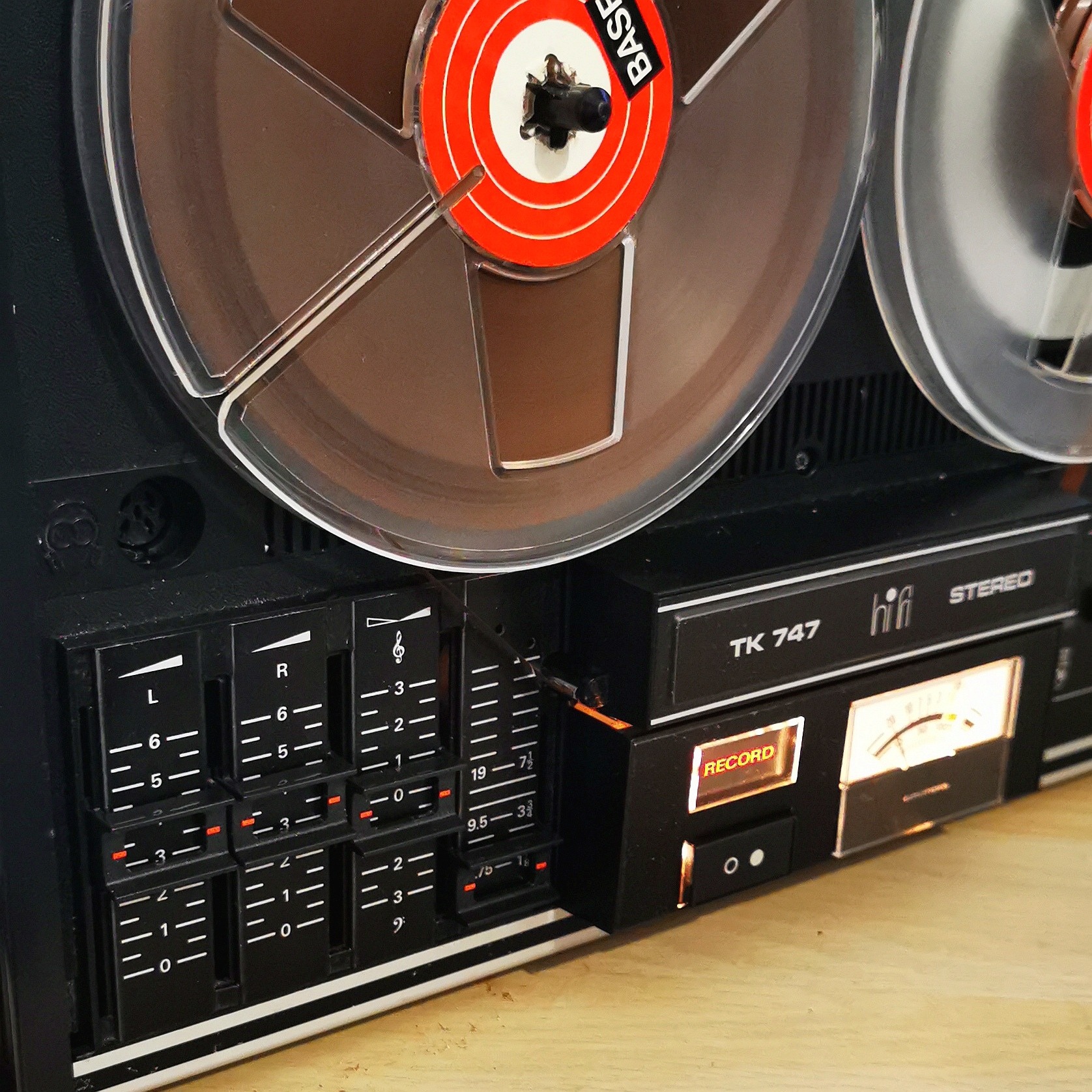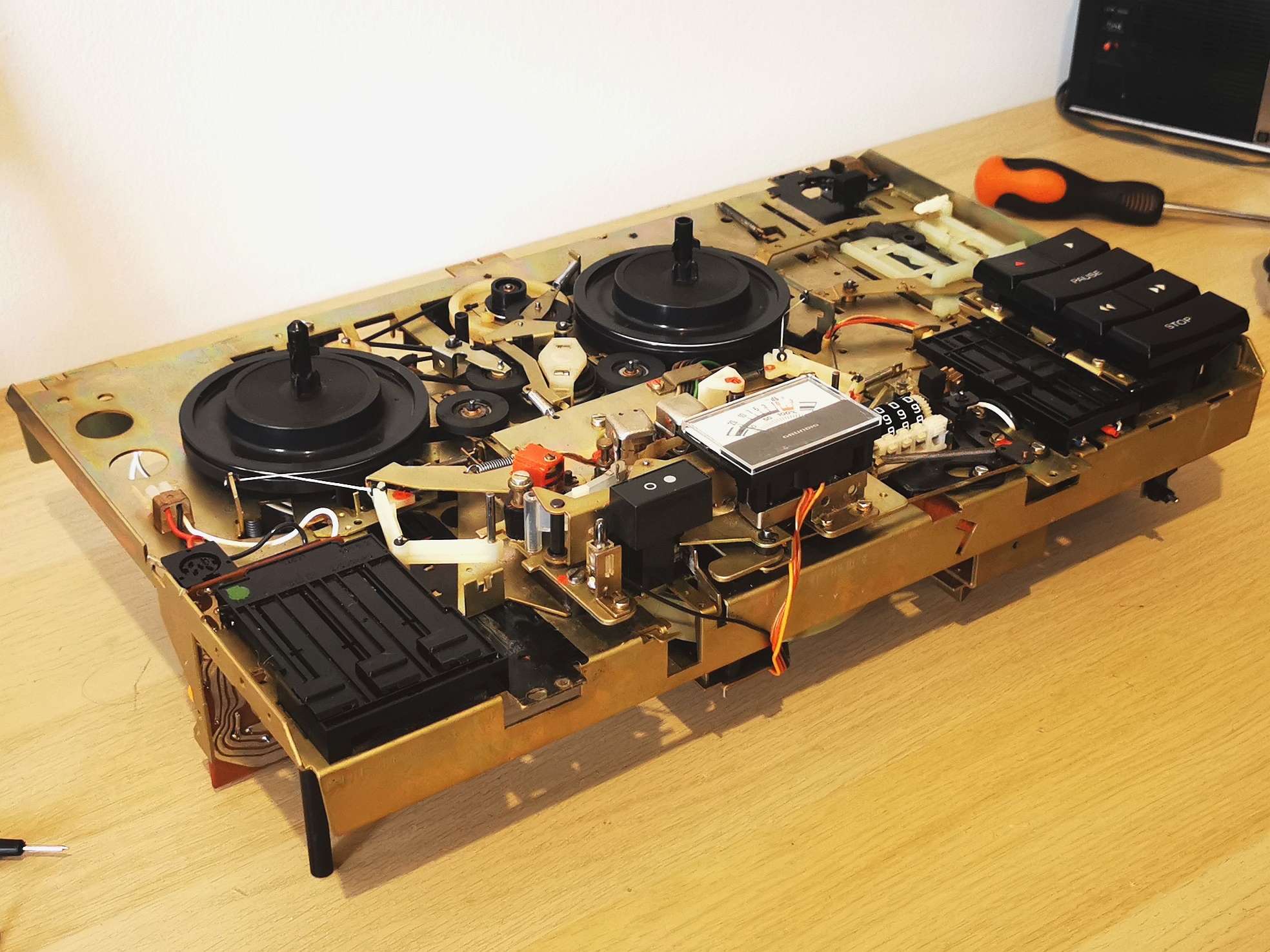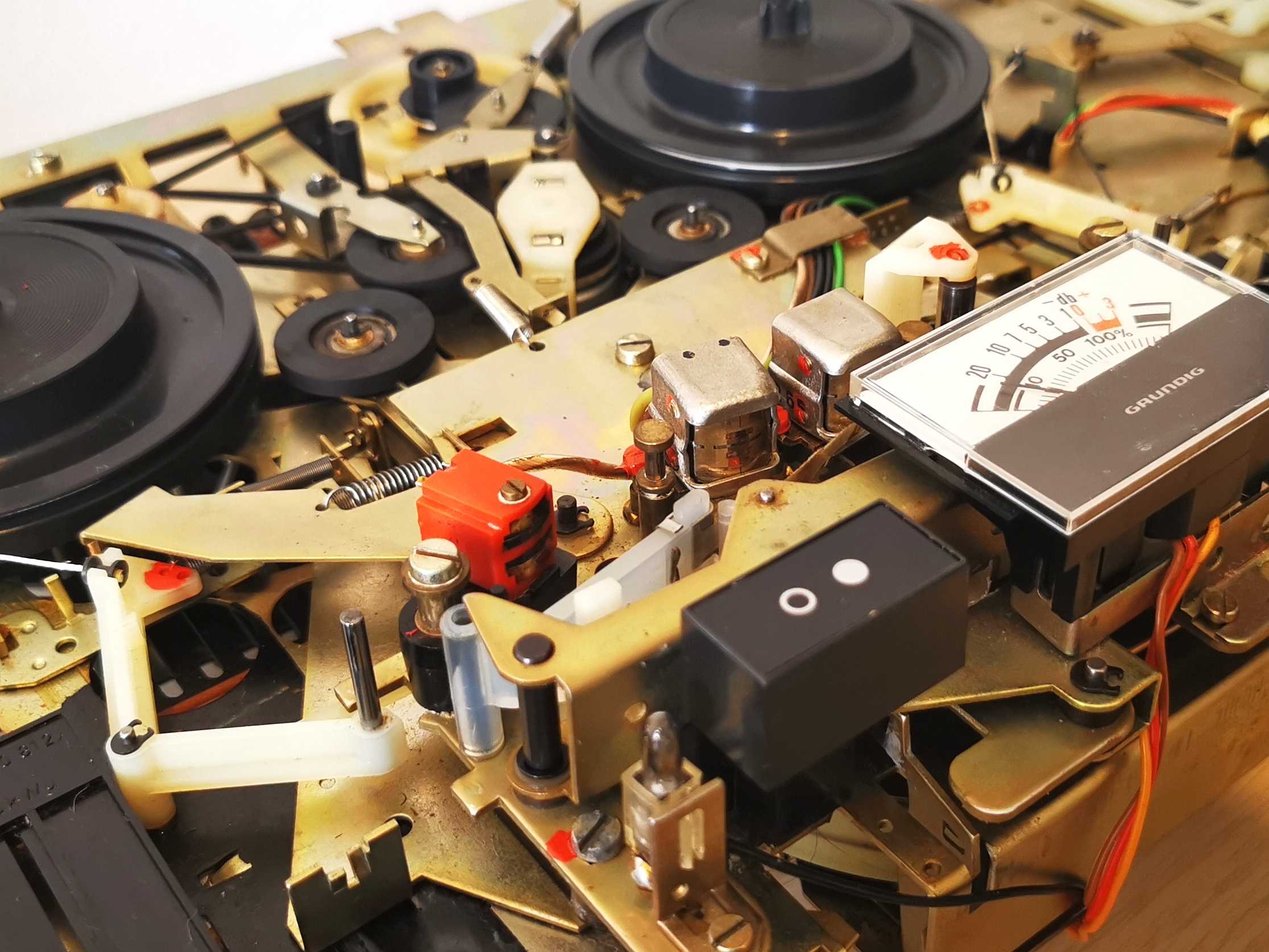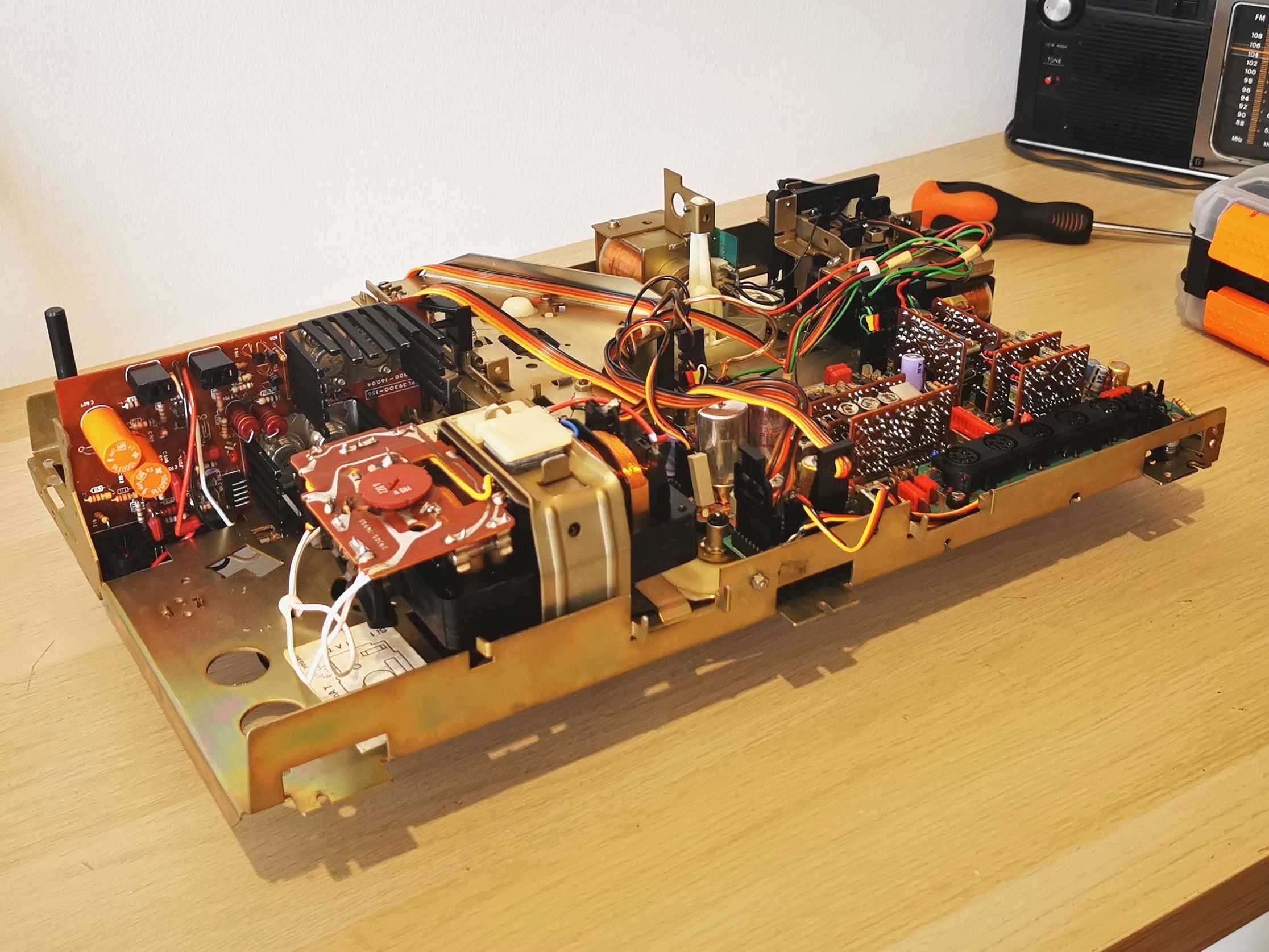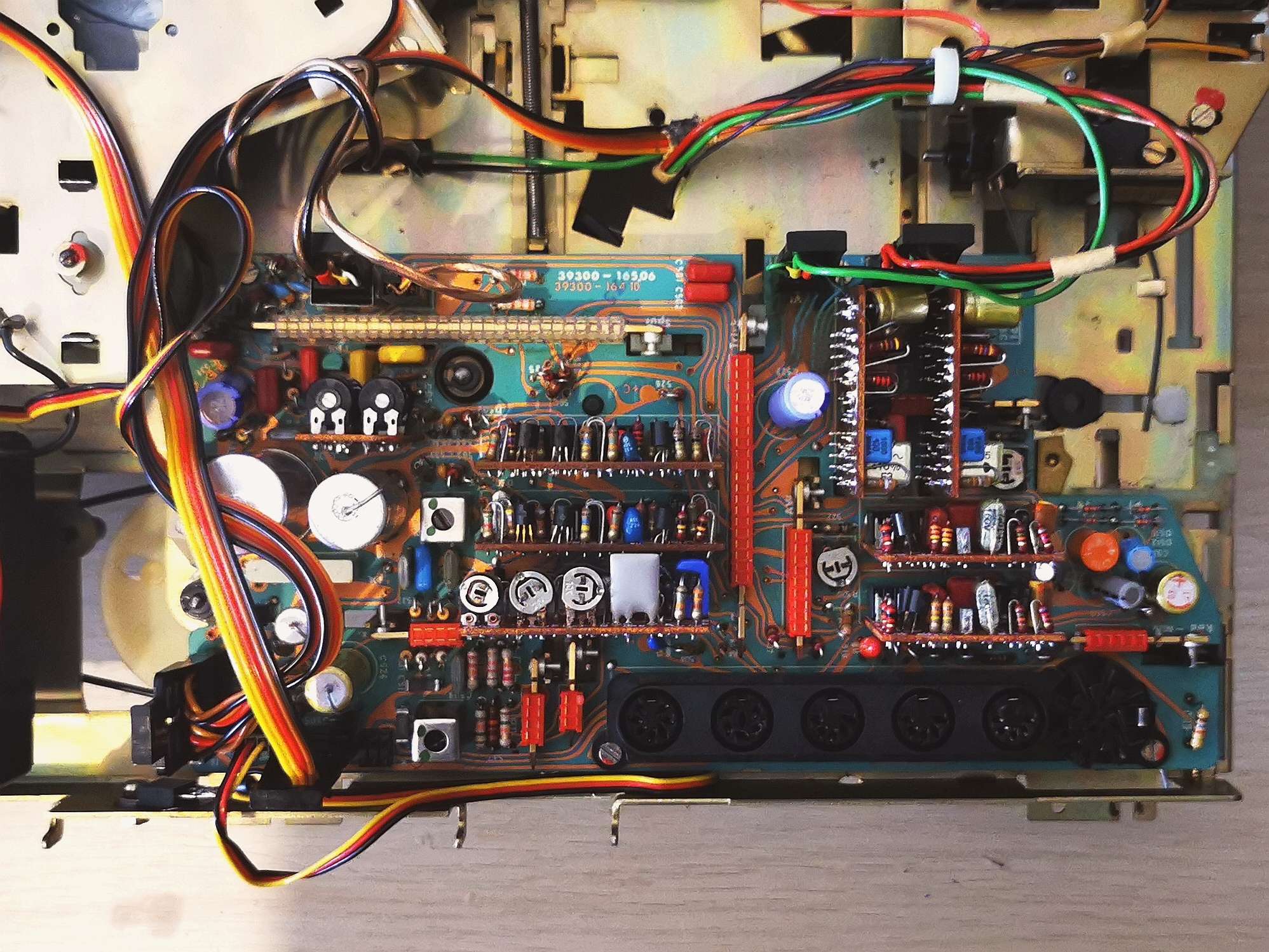Grundig TK-747 Reel to reel
The Grundig TK-747 is a 3-head, single motor electromechanically operated stereo open reel deck made by Grundig in around 1971. It accepts reel sizes up to seven inches, features a built in power amplifier with tone controls and onboard speakers, 3 speeds (4.75, 9.5 and 19cm/s). The single db meter has a fast attack and slow decay time to work as a peak level indicator, and will display whichever channel is highest of left and right when in stereo modes. The machine features an array of interesting user features, and some rather unusual and clever design choices inside. It was also sold in silver guise as the TK-745, and occupied the midpoint of Grundig's early 70s lineup - with the TK-545 and 547 being paddle lever operated 2 head decks, while the taller and larger TK-845 and 847 feature two meters instead of one, and slightly more advanced controls over record levels and using multiple sources.
Features wise the machine has some oddities. Being a German-built machine from the era, all plugs are DIN sockets of various types, however it is possible to use a 5-pin DIN connector and plug the machine into the DIN tape inputs that can be found on most amplifiers of the same time period - I have it connected to an 80s Kenwood amp no problem. Despite being a 3 head deck, it can only monitor from your tape when in mono recording modes- its circuitboard uses plug in amplification modules, and it only has two intermediate amplifiers in total on board. These cards are required for both playback and recording - so in mono, one can be used for off-tape playback monitoring and one for recording, but in stereo mode, both cards are occupied recording and you cannot monitor. The machine can run in stereo, "mono 1" (using track 1 only of your four track tapes), "mono 2" (using track 2), and "duo", which will play both channels, but mix them together and output in monophonic. Above the slider to set your channel selection is the tape monitor selector, using pictograms with arrows.
To the left of these controls is what is probably the most confusing set of controls on the machine - a five position slider that says "syn.pl", "multi.pl", "echo", "manual", "aut.mus" and "aut.sp". The latter two are automatic level settings - automatic music and automatic speech, respectively - the circuitry for this works much the same way as setting the levels yourself does, and doesn't produce unpleasant whooshing or volume variations they way automatic gain control on cheaper tape recorders tends to. "Manual" allows manual level setting, using the red-coloured volume slider on the lower far right. Next to that is a slider labelled "multi.pl" - this is relevant to the sound levels of the "special feature" record modes, all of which only work in monophonic.
"Syn.pl" is a crude form of the "simulsynch" feature found on professional decks: setting the machine to "mono 2" in this mode and recording will record to track 2, but will monitor from track 1 - for example, record drums to track 1 in normal recording, then switch over to track 2 + syn.pl to add vocals. You can then play back your combined recording by using "DUO" playback. In the similar multi.pl mode, increasing the "multi.pl" slider control will ALSO mix track one into your new recording, so you end up with both vocals and drums together on your recorded track two, and the original drums-only on track 1 untouched. You can then, for example, switch to recording/over-writing track one, monitor from your combined vocals and drums on track two, and add guitar- letting you build up a song layer by layer. This is very much a hobbyist feature, given the result will be monophonic and you can't separate the layers out, but in a 1971 consumer deck it's quite a cool inclusion. "Echo" simply lets you record with an echo, which you can fade in and out with the multi-play slider control.
To the bottom left of the machine is a different set of sliders - these only relate to the internal speakers/power amp, or, if there are external speakers plugged into the back it will use those. There is a slider for left volume, right volume, and then a slider with a music symbol - this is a tone control, sliding upwards will make things more trebley, downwards more bassy. Next, the speed selection slider - this can only be used when the machine is completely powered off. On the far right are the computer-key esque transport controls, with record and play at the top, a wide "pause" bar, fast forward and rewind, and stop on the bottom. The transport is partially solenoid-operated, partially mechanical -the pause function is all mechanical, while the other buttons both move some mechanical parts AND switch solenoids on and off with a satisfying clunk. It is possible to press fast-forward and rewind at the same time, but this is fine: rewind gets full priority, it will just go into rewind mode. Record cannot be pressed while play is already engaged, they must be turned on at the same time, so no flying start recordings on this machine. It does have a very nice illuminated "Record" lamp though!
One final quirk of the machine's operation is the auto-stop - which, rather than being based on if there's actually tape inside or not, it stops based on the conductive metal foil ends found on most European made tape reels. This does helpfully mean that it will autostop BEFORE the leader comes undone in fast-winding modes, and if you have tapes with foil on for auto-reversing decks, this machine will treat them well, however many Japanese tapes (for example Maxell UDXL, my favourite tape of all time) will not auto-stop at all, so either splice some foil on or make sure to hover over the stop button.
